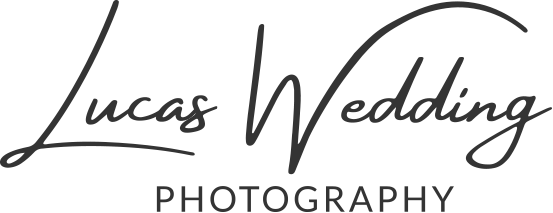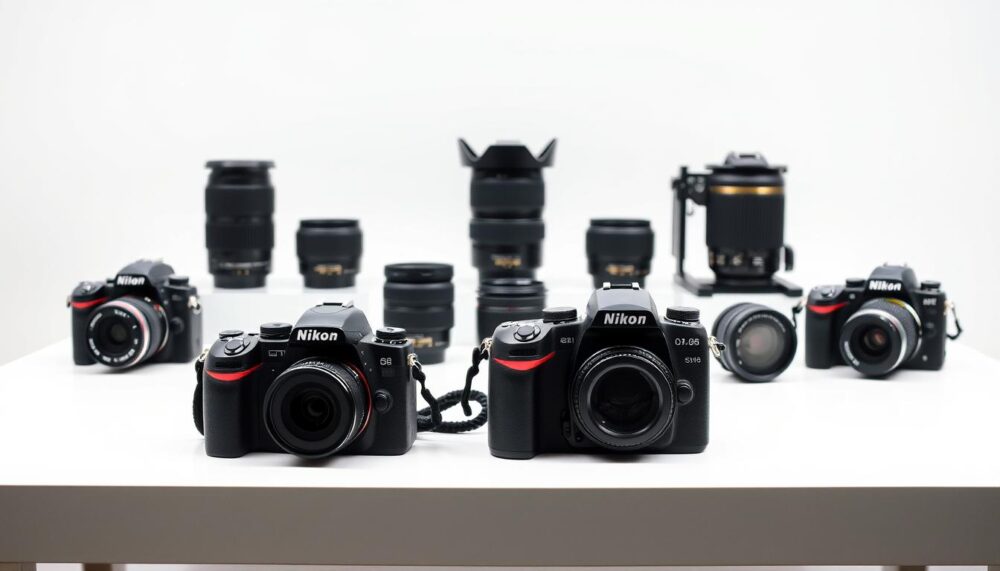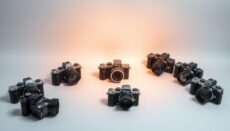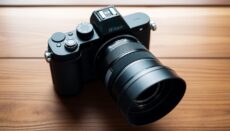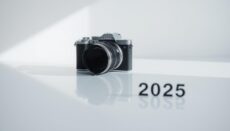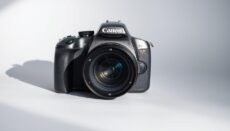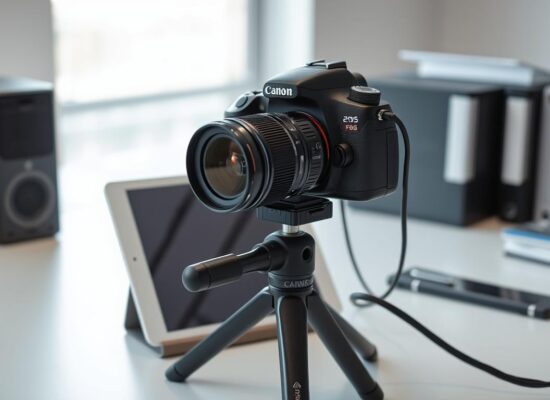For decades, Nikon has been a trusted name in the world of photography, catering to both beginners and seasoned professionals. With a legacy of innovation and reliability, the brand continues to evolve, offering cutting-edge technology that meets the demands of modern photography. In 2025, Nikon remains a strong contender, blending its renowned image quality with advanced features.
One of the standout features of Nikon’s latest offerings is their sensor design, which delivers exceptional clarity and detail. The introduction of mirrorless systems, such as the Z Series, has revolutionised the way photographers capture moments. These systems combine speed, precision, and versatility, making them ideal for various photography genres.
Nikon’s commitment to innovation is evident in its seamless integration of legacy F-mount lenses with the new Z-mount system. This ensures that users can leverage their existing equipment while exploring the benefits of modern technology. Whether you’re a beginner or a professional, Nikon’s cameras are designed to enhance your creative journey.
Key Takeaways
- Nikon maintains a strong reputation in both amateur and professional photography markets.
- Advanced sensor design ensures superior image quality in 2025 models.
- Mirrorless systems like the Z Series offer speed and versatility.
- Legacy F-mount compatibility allows seamless use of older lenses.
- Nikon’s cameras cater to a wide range of photography genres and skill levels.
Introduction to Nikon Cameras in 2025
The year 2025 marks another milestone for Nikon in delivering cutting-edge photography tools. With a legacy spanning decades, the brand continues to innovate, blending tradition with modern technology. Its commitment to both DSLR and mirrorless ecosystems ensures it remains a top choice for photographers of all levels.
The Evolution of Nikon Cameras
Nikon’s journey in photography has been defined by continuous improvement. From its early days to 2025, the brand has introduced groundbreaking features. The Z9, named Camera of the Year in 2022, exemplifies this evolution with its advanced autofocus and rugged build.
Another testament to Nikon’s innovation is the D850. Launched eight years ago, it remains popular due to its 45.7MP sensor and exceptional dynamic range. These features make it a favourite among professionals and enthusiasts alike.
Why Nikon Remains a Top Choice
One of Nikon’s standout features is its backward compatibility with F-mount lenses, a system introduced in 1959. This allows photographers to use their existing lenses with newer models, saving costs and enhancing versatility.
Additionally, Nikon’s weather-sealed builds in models like the D6 and Z9 ensure durability in challenging conditions. With over 400 Nikkor lenses available, the brand offers a comprehensive ecosystem for every photography need.
Are Nikon Cameras Good for Beginners?
Starting your photography journey? Nikon’s entry-level models are designed to make the process seamless. With intuitive features and guided modes, these cameras are perfect for those taking their first steps into photography.
Entry-Level Models: Nikon D3500 and D5600
The D3500 and D5600 are standout choices for beginners. The D3500’s Easy Operation mode simplifies menu navigation, making it ideal for novices. Meanwhile, the D5600 offers a touchscreen interface and advanced scene recognition, enhancing usability.
Both models come with in-camera tutorials, helping users master manual controls. Automatic subject tracking ensures sharp images of moving targets, while smartphone app integration allows for remote control and easy sharing.
Ease of Use and Guided Modes
Nikon’s beginner-friendly cameras are packed with features that make learning enjoyable. The simplified menu structures include visual aids, reducing the learning curve. Built-in creative filters add artistic effects, encouraging experimentation.
“Nikon’s entry-level cameras are a gateway to creativity, offering tools that inspire confidence in beginners.”
Here’s a quick comparison of the D3500 and D5600:
| Feature | D3500 | D5600 |
|---|---|---|
| Easy Operation Mode | Yes | No |
| Touchscreen Interface | No | Yes |
| Scene Recognition | Basic | Advanced |
| Creative Filters | Yes | Yes |
These options ensure that beginners can find a camera that suits their needs, making photography accessible and enjoyable.
Are Nikon Cameras Good for Professionals?
Professionals demand precision, and Nikon delivers with its high-end models. Designed to meet the rigorous needs of seasoned photographers, these tools combine cutting-edge technology with robust build quality. Whether capturing fast-paced sports or intricate studio work, Nikon’s professional cameras excel in every scenario.
High-End Models: Nikon D850 and D6
The D850 remains a favourite among professionals for its 45.7MP sensor and exceptional dynamic range. Its ability to capture intricate details makes it ideal for landscapes, portraits, and commercial work. Meanwhile, the D6 is tailored for sports and wildlife photography, offering a shutter lag of just 180ms and advanced 3D tracking.
For those embracing mirrorless technology, the Z9 stands out with its 120Hz EVF refresh rate and subject detection autofocus. This model ensures seamless performance in dynamic environments, making it a versatile choice for professionals.
Advanced Features for Professional Use
Nikon’s professional cameras are packed with features that enhance productivity and creativity. Customisable function buttons on the Z9 and D6 allow users to tailor controls to their workflow. Ethernet and Wi-Fi 6 connectivity enable seamless studio tethering, ensuring efficient file transfer and remote control.
Multi-axis level gauges provide precision framing, while dual-stream thermal management ensures reliable video recording. These features, combined with Nikon’s renowned build quality, make their cameras a trusted companion for professionals worldwide.
| Feature | D850 | D6 | Z9 |
|---|---|---|---|
| Sensor Resolution | 45.7MP | 20.8MP | 45.7MP |
| Autofocus Points | 153 | 105 | 493 |
| Shutter Lag | 42ms | 180ms | 20ms |
| Connectivity | Wi-Fi, Bluetooth | Ethernet, Wi-Fi | Wi-Fi 6, Ethernet |
Image Quality and Dynamic Range
When it comes to capturing stunning visuals, image quality and dynamic range are paramount. Nikon’s latest offerings excel in these areas, delivering exceptional clarity and detail. Whether you’re shooting landscapes or portraits, the brand’s advanced sensor technology ensures every shot is sharp and vibrant.
Nikon’s Sensor Technology
Nikon’s sensors are designed to maximise light capture, resulting in superior image quality. The Z7 II, for instance, boasts a dynamic range of 14.7 stops, making it ideal for high-contrast scenes. This allows photographers to retain detail in both shadows and highlights.
Another standout feature is the base ISO comparison. The Z8 and Z9 models offer a base ISO of 64, providing cleaner images in low-light conditions. Long exposure noise reduction algorithms further enhance performance, ensuring minimal grain in extended shots.
Comparing Dynamic Range Across Models
Different models cater to varying needs. The D780, with a dynamic range of 13.8 stops, is a versatile choice for general photography. Meanwhile, the D810A is optimised for astrophotography, featuring H-alpha sensitivity for capturing celestial details.
Pixel shift technology in the Z8 and Z9 ensures higher resolution by combining multiple exposures. Dual conversion gain in video modes enhances low-light performance, making these cameras suitable for both stills and motion capture.
Autofocus Performance
Precision in focusing is a cornerstone of exceptional photography, and Nikon’s autofocus systems are designed to deliver just that. Whether capturing fast-moving subjects or working in challenging lighting conditions, these systems ensure sharp, accurate results.
Nikon’s Autofocus Systems
Nikon’s autofocus technology has evolved significantly, offering features like 3D tracking and subject detection. The D500, for instance, achieves 10 frames per second with full autofocus, making it ideal for sports and action photography. Meanwhile, the Z9 takes it a step further, tracking subjects at an impressive 120fps with its electronic shutter.
These systems are backed by advanced algorithms that analyse movement patterns. This ensures consistent focus, even in unpredictable scenarios like rally car tracking or bird-in-flight photography.
Real-World Autofocus Performance
In real-world tests, Nikon’s autofocus systems excel across various scenarios. For example, during rally car tracking tests, the Z9 maintained focus on fast-moving vehicles with remarkable accuracy. Similarly, bird-in-flight success rates are exceptionally high, thanks to the system’s ability to predict and follow erratic movements.
Low-light conditions, such as concert photography, are no challenge either. The autofocus systems adapt swiftly, ensuring sharp images even in dim environments. Macro focus stacking accuracy is another standout feature, allowing photographers to capture intricate details with ease.
“Nikon’s autofocus systems redefine precision, making them a trusted choice for professionals and enthusiasts alike.”
Video face tracking comparisons further highlight the system’s versatility, ensuring subjects remain in focus during dynamic shots. These capabilities make Nikon’s autofocus systems a reliable tool for diverse photography needs.
Nikon DSLR Cameras: A Legacy of Excellence
The legacy of Nikon’s DSLR cameras remains unmatched in 2025. Renowned for their durability and precision, these cameras continue to inspire photographers of all levels. From the timeless D810 to the hybrid D780, Nikon’s DSLR range bridges the gap between tradition and innovation.
Nikon D810: A Timeless Classic
The D810 remains a favourite among professionals for its 36.3MP sensor and exceptional dynamic range. Its ability to capture intricate details makes it ideal for landscapes, portraits, and commercial work. The camera’s robust build ensures reliability in challenging conditions, while its ergonomic design enhances user comfort.
With a base ISO of 64, the D810 delivers clean images in low-light scenarios. Its advanced metering system ensures accurate exposure, even in high-contrast environments. These features make it a versatile tool for photographers seeking uncompromising quality.
Nikon D780: Bridging DSLR and Mirrorless
The Nikon D780 combines the best of DSLR and mirrorless technology. Its 24.5MP BSI sensor ensures excellent image quality, while 12fps Live View shooting caters to fast-paced photography. The camera inherits the Z6’s video capabilities, offering 4K UHD recording with N-Log support.
Silent shooting in Live View mode is a standout feature, ideal for discreet photography. Dual SD card slots provide redundancy, ensuring data security. With a battery life of 2260 shots per charge, the D780 is built for extended use.
“The D780 is a testament to Nikon’s ability to innovate while staying true to its DSLR roots.”
| Feature | D810 | D780 |
|---|---|---|
| Sensor Resolution | 36.3MP | 24.5MP |
| Live View Shooting | 5fps | 12fps |
| Video Capabilities | 1080p | 4K UHD |
| Battery Life | 1200 shots | 2260 shots |
Optical and electronic viewfinder benefits cater to diverse shooting styles. Whether you prefer the immediacy of an optical viewfinder or the versatility of an electronic one, the D780 offers the best of both worlds. This hybrid approach makes it a compelling choice for photographers transitioning to mirrorless systems.
Nikon Mirrorless Cameras: The Future of Photography
The shift towards mirrorless technology has redefined modern photography, and Nikon’s Z Series stands at the forefront of this evolution. These cameras combine cutting-edge design with advanced features, making them a top choice for photographers seeking versatility and performance.
Nikon Z Series: Z6 and Z7
The Z6 and Z7 are flagship models in Nikon’s mirrorless lineup. The Z6 excels in low-light conditions, offering a 24.5MP sensor with a wide dynamic range. Meanwhile, the Z7 boasts a 45.7MP sensor, ideal for high-resolution photography. Both models feature in-body image stabilisation, ensuring sharp images even in challenging scenarios.
One of the standout features is the Z mount’s 55mm diameter, significantly larger than the F-mount’s 44mm. This, combined with a 16mm flange distance, allows for the creation of lenses with apertures as wide as f/0.95. Such design innovations provide unparalleled creative freedom.
Advantages of Mirrorless Technology
Mirrorless cameras offer several benefits over traditional DSLRs. Real-time exposure preview allows photographers to see the final image before capturing it, reducing guesswork. Focus peaking aids in manual focusing, ensuring precision with legacy lenses.
Electronic shutters eliminate mechanical noise and vibration, making them ideal for discreet photography. The absence of a mirror box also enables more compact and lightweight designs, enhancing portability.
- Lens design freedom: The Z mount’s large diameter and short flange distance enable innovative lens designs, such as ultra-fast primes and compact zooms.
- Heat management: Advanced cooling systems in models like the Z9 ensure reliable performance during extended 8K video recording sessions.
These features make Nikon’s mirrorless cameras a compelling choice for photographers looking to embrace the future of imaging technology.
Best Nikon Cameras for Sports Photography
Sports photography demands speed and accuracy, and Nikon’s lineup excels in both. Whether capturing a sprint finish or a diving save, these cameras are designed to keep up with the action. With advanced autofocus systems and rapid shooting capabilities, they ensure every moment is captured in stunning detail.
Speed and Precision
The Nikon D500 is a standout choice for sports photographers. Its 10fps burst mode ensures rapid-fire shooting, while the 153-point autofocus system tracks moving subjects with precision. This model is particularly effective in challenging lighting conditions, thanks to its ISO range of up to 51,200.
Another feature worth noting is the camera’s ability to maintain focus on erratic movements. Whether tracking a football player or a bird in flight, the D500 delivers consistent results. Its rugged build also ensures durability in outdoor environments.
Full-Frame Powerhouse
For those seeking a full-frame option, the Nikon D780 is a compelling choice. With 12fps silent shooting, it’s ideal for discreet photography in stadiums or arenas. The 51-point phase detect autofocus in OVF mode ensures sharp images, even in fast-paced scenarios.
Low-light performance is another highlight, with the D780 delivering clean images at high ISO settings. Dual Expeed 6 processors enhance speed and efficiency, while features like time-lapse movie creation and focus shift shooting add versatility. For more insights into Nikon’s latest models, visit this detailed guide.
Best Nikon Cameras for Wildlife Photography
Wildlife photography requires tools that combine precision, speed, and durability. Nikon’s lineup offers models tailored to meet these demands, ensuring photographers can capture stunning moments in nature with ease.
High Resolution and Speed
The Nikon D850 is a standout choice for wildlife enthusiasts. Its 45.7MP sensor delivers exceptional detail, making it ideal for capturing intricate textures like fur and feathers. The camera’s fast burst rate of 7fps ensures you never miss a critical moment, whether it’s a bird in flight or a predator on the move.
Advanced autofocus systems with 153 focus points provide reliable tracking, even in challenging lighting conditions. This makes the D850 a versatile tool for diverse environments, from dense forests to open savannahs.
APS-C Advantage
For those seeking extended telephoto reach, the Nikon D500 is an excellent option. Its APS-C sensor introduces a 1.5x crop factor, effectively magnifying the focal length of your lenses. This is particularly useful for photographing distant subjects like birds or elusive wildlife.
The D500 also excels in video capabilities, offering 4K recording with 120fps HD slow-motion options. This feature allows photographers to capture dynamic movements in stunning detail, adding a cinematic touch to their work.
- 200-500mm f/5.6 pairing: This lens combination is perfect for wildlife, providing sharp images with excellent bokeh.
- Buffer clearance speeds: The D500’s fast buffer ensures continuous shooting without delays.
- Backlit button illumination: Essential for early morning or late-night shoots.
- Custom U1/U2 settings: Quickly switch between preferred configurations for different scenarios.
- Rainforest humidity resistance: Built to withstand challenging weather conditions.
| Feature | D850 | D500 |
|---|---|---|
| Sensor Resolution | 45.7MP | 20.9MP |
| Burst Rate | 7fps | 10fps |
| Crop Factor | None | 1.5x |
| Video Capabilities | 4K UHD | 4K with 120fps HD |
Best Nikon Cameras for Portrait Photography
Portrait photography thrives on detail and precision, and Nikon’s offerings excel in both. Whether you’re capturing candid moments or studio portraits, the brand’s cameras provide the tools needed to achieve stunning results. With advanced sensors and autofocus systems, Nikon ensures every shot is sharp and lifelike.
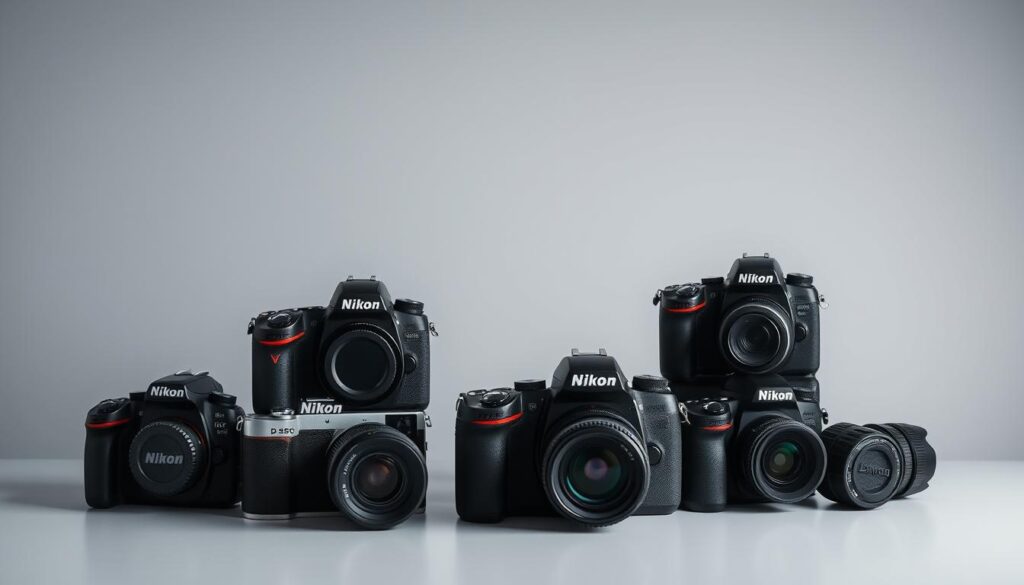
Unmatched Detail
The Nikon D850 is a favourite among portrait photographers for its 45.7MP BSI sensor. This delivers exceptional resolution, allowing for intricate details like skin texture and hair strands to be captured with clarity. The camera’s dynamic range ensures balanced exposure, even in challenging lighting conditions.
Silent shooting is another standout feature, ideal for candid work where discretion is key. Pairing the D850 with prime lenses enhances its performance, delivering stunning bokeh and sharp focus. These features make it a versatile tool for both studio and outdoor portrait sessions.
Mirrorless Excellence
For those embracing mirrorless technology, the Nikon Z7 is a top choice. Its 493-point hybrid autofocus system includes eye detection, ensuring precise focus on the subject’s eyes. This is crucial for creating engaging and lifelike portraits.
The Z7’s in-body image stabilisation (IBIS) works seamlessly with prime lenses, reducing camera shake and enhancing sharpness. The Z 85mm f/1.2 S lens pairing is particularly effective, offering creamy bokeh and excellent low-light performance. Focus transition in video mode adds versatility, making it suitable for hybrid shooters.
EVF WYSIWYG (What You See Is What You Get) exposure preview ensures accurate framing and lighting adjustments before capturing the shot. This feature is invaluable for achieving the desired look in-camera, reducing post-processing time.
Best Nikon Cameras for Astrophotography
Astrophotography demands precision and advanced technology, and Nikon’s cameras rise to the challenge. Whether you’re capturing the Milky Way or distant galaxies, the brand’s specialised models ensure exceptional results. With features tailored to low-light conditions and long exposures, Nikon’s cameras are a favourite among astrophotography enthusiasts.
Nikon D810A: Specialised for the Stars
The Nikon D810A is specifically designed for astrophotography. Its sensor is optimised for capturing the faint light of stars, with enhanced sensitivity to the H-alpha wavelength. This allows for stunning images of nebulae and other celestial phenomena.
Key features include a 36.3MP resolution and a wide ISO range of 100-51,200. The camera’s 14-bit RAW capture ensures detailed images, while the Starry Sky AF mode simplifies focusing on distant stars. Intervalometer programming and time-lapse exposure smoothing further enhance its usability for capturing the night sky.
Nikon Z6: Low-Light Performance
For those seeking versatility, the Nikon Z6 excels in low-light conditions. Its BSI sensor and 12fps RAW capture make it ideal for astrophotography. The camera’s light pollution filter compatibility ensures clear images even in urban environments.
Milky Way tracking accuracy is another standout feature, allowing photographers to capture the galaxy’s intricate details. The Z6’s compact design and advanced autofocus system make it a practical choice for both beginners and seasoned astrophotographers.
| Feature | D810A | Z6 |
|---|---|---|
| Sensor Resolution | 36.3MP | 24.5MP |
| ISO Range | 100-51,200 | 100-51,200 |
| Starry Sky AF Mode | Yes | No |
| Light Pollution Filter Compatibility | No | Yes |
These cameras offer unique advantages, ensuring photographers can capture the cosmos with clarity and precision. Whether you’re a beginner or a professional, Nikon’s astrophotography tools provide the performance needed to explore the night sky.
Best Nikon Cameras for Video
Video enthusiasts and professionals alike will find Nikon’s offerings to be a perfect blend of innovation and functionality. Whether you’re shooting cinematic sequences or dynamic action, Nikon’s cameras deliver exceptional performance. With advanced features tailored for videography, these tools ensure every frame is sharp, vibrant, and full of detail.
Nikon D7500: 4K Capabilities
The Nikon D7500 is a versatile choice for videographers. Its 4K UHD recording ensures high-resolution footage, while 120fps Full HD slow motion adds a creative touch to your projects. The camera’s 20.9MP sensor delivers excellent dynamic range, making it ideal for diverse lighting conditions.
Key features include zebra patterns for exposure monitoring and focus peaking for precise manual focusing. The D7500’s ergonomic design ensures comfort during extended shoots, while its lightweight build enhances portability.
Nikon Z6: Mirrorless Video Power
For those embracing mirrorless technology, the Nikon Z6 stands out as a powerhouse. Its 10-bit N-Log over HDMI ensures professional-grade colour grading, while ProRes RAW recording offers unmatched flexibility in post-production. The in-body image stabilisation (IBIS) minimises shake, making handheld work seamless.
Anamorphic desqueeze support and dual ISO performance tests further enhance its versatility. Whether you’re shooting in low light or capturing fast-paced action, the Z6 delivers consistent results. Its compact design and advanced autofocus system make it a favourite among videographers.
| Feature | D7500 | Z6 |
|---|---|---|
| 4K UHD Recording | Yes | Yes |
| Slow Motion (120fps) | Full HD | Full HD |
| ProRes RAW Recording | No | Yes |
| In-Body Image Stabilisation | No | Yes |
These cameras cater to diverse videography needs, ensuring every project is a success. Whether you’re a beginner or a seasoned professional, Nikon’s video tools provide the performance and creativity you need.
Nikon’s F-Mount Lenses: A Comprehensive Range
Nikon’s F-mount lenses have been a cornerstone of photography for decades, offering versatility and reliability. With a legacy spanning over six decades, these lenses cater to photographers of all skill levels, from beginners to seasoned professionals. Their compatibility across generations ensures that users can leverage their existing equipment while exploring new creative possibilities.
Compatibility Across Generations
One of the standout features of Nikon’s F-mount system is its backward compatibility. Introduced in 1959, the F-mount has evolved while maintaining its core design. This allows photographers to use older lenses on modern bodies, ensuring a seamless transition between generations. Whether you’re using a classic film camera or the latest DSLR, F-mount lenses deliver consistent performance.
Best F-Mount Lenses for Beginners and Pros
For beginners, the AF-S 50mm f/1.8G is an excellent choice. Priced at around £150 used, it offers sharp images and a wide aperture for stunning bokeh. Professionals often opt for the 70-200mm f/2.8E FL ED VR, a high-performance zoom lens priced at £2,000 new. Its fast autofocus and vibration reduction make it ideal for sports and wildlife photography.
- Trinity zoom recommendations: The 14-24mm f/2.8G, 24-70mm f/2.8E, and 70-200mm f/2.8E FL ED VR cover a wide range of focal lengths.
- Macro lens options: The 105mm f/2.8G VR is perfect for close-up photography.
- Third-party lens support: Brands like Sigma and Tamron offer affordable alternatives with similar performance.
- VR vs non-VR performance: Vibration reduction is essential for handheld shooting, but non-VR lenses are often lighter and more affordable.
- Lens rental economics: Renting high-end lenses can be cost-effective for occasional use.
For more detailed insights into the best Nikon lenses, explore our comprehensive guide.
| Lens | Type | Price | Best For |
|---|---|---|---|
| AF-S 50mm f/1.8G | Prime | £150 (used) | Portraits, Low Light |
| 70-200mm f/2.8E FL ED VR | Zoom | £2,000 (new) | Sports, Wildlife |
| 105mm f/2.8G VR | Macro | £800 (new) | Close-Up Photography |
| 14-24mm f/2.8G | Zoom | £1,500 (new) | Landscapes, Architecture |
Nikon’s Z-Mount Lenses: The Next Generation
The evolution of lens technology has reached new heights with Nikon’s Z-mount system. Designed to meet the demands of modern photography, these lenses offer unparalleled optical performance and versatility. Whether you’re a professional or an enthusiast, the Z-mount series provides a range of options to enhance your creative vision.
Advantages of the Z-Mount System
One of the standout features of the Z-mount system is its large 55mm diameter. This allows for the creation of lenses with wider apertures, such as the Z 58mm f/0.95 S Noct. The result is exceptional light-gathering capability and stunning bokeh, perfect for low-light and portrait photography.
Another advantage is the short flange distance of 16mm. This design enables compact and lightweight lenses, enhancing portability without compromising on quality. The system also supports advanced features like in-body image stabilisation, ensuring sharp images even in challenging conditions.
Top Z-Mount Lenses for 2025
In 2025, Nikon continues to expand its Z-mount lineup with innovative lens designs. The Z 14-30mm f/4 S is a versatile option for landscape and architectural photography. Its compact size and edge-to-edge sharpness make it a favourite among photographers.
For those seeking exotic options, the Z 58mm f/0.95 S Noct stands out. Priced at £8,000, this lens delivers unmatched optical performance, making it ideal for professionals. Its manual focus design allows for precise control, while the wide aperture ensures stunning depth of field.
- Pancake lens portability: Compact designs for travel and street photography.
- Exotic super telephotos: High-performance lenses for wildlife and sports.
- Macro lens capabilities: Capture intricate details with exceptional clarity.
- Third-party expansion: Growing support from brands like Sigma and Tamron.
- Future roadmap analysis: Continuous innovation to meet evolving needs.
With its cutting-edge technology and diverse lens options, the Z-mount system is shaping the future of photography. Whether you’re exploring new creative possibilities or pushing the boundaries of optical performance, Nikon’s Z-mount lenses are designed to inspire.
Price vs Performance: Finding the Right Nikon Camera
Balancing cost and performance is crucial when choosing the right photography equipment. Whether you’re a beginner or a professional, understanding the value of your investment ensures you get the most out of your gear. Nikon offers a range of options, from budget-friendly models to high-end powerhouses, catering to diverse needs and budgets.
Budget-Friendly Options
For those starting out or working within a limited budget, Nikon’s entry-level models provide excellent value. The D3500 and D5600 are popular choices, offering intuitive features and reliable performance. These cameras are ideal for learning the basics without breaking the bank.
High-End Models Worth the Investment
Professionals seeking top-tier performance often turn to models like the Z9, priced at £5,300 body only, or the D6, available used for £3,150. These cameras deliver unmatched speed, precision, and durability, making them a worthwhile investment for serious photographers.
- Professional service contracts: Ensure long-term reliability and support.
- Resale value projections: High-end models often retain their value better.
- Total cost of ownership: Includes accessories, maintenance, and upgrades.
- Insurance considerations: Protect your gear against damage or theft.
- Tax deductions for pros: Claim expenses as business costs.
Conclusion: Are Nikon Cameras Good for Beginners and Professionals in 2025?
In 2025, the brand continues to prove its versatility, catering to both newcomers and seasoned photographers. Its dual strategy of maintaining DSLR excellence while advancing mirrorless technology ensures it remains relevant in a rapidly evolving industry. The seamless integration of legacy F-mount lenses with the innovative Z-mount system offers users unparalleled flexibility, making it a future-proof choice.
For beginners, entry-level models like the D3500 provide intuitive features and guided modes, simplifying the learning curve. Professionals, on the other hand, benefit from high-end models such as the Z9 and D850, which deliver precision, speed, and durability. The extensive lens ecosystem further enhances the brand’s appeal, offering options for every photography genre.
When compared to competitors, the brand’s value proposition stands out, combining cutting-edge technology with robust build quality. Whether you’re capturing landscapes, portraits, or fast-paced action, there’s a model tailored to your needs. For those seeking reliability and innovation, the brand remains a top contender in the world of photography.
FAQ
Are Nikon cameras suitable for beginners in 2025?
Yes, models like the Nikon D3500 and D5600 are designed with user-friendly features and guided modes, making them ideal for those new to photography.
Do Nikon cameras meet the needs of professional photographers?
Absolutely. High-end models such as the Nikon D850 and D6 offer advanced features, exceptional image quality, and robust build quality tailored for professional use.
How does Nikon’s sensor technology enhance image quality?
Nikon’s sensors are renowned for their high resolution and excellent dynamic range, ensuring detailed and vibrant images across various lighting conditions.
What makes Nikon’s autofocus systems stand out?
Nikon’s autofocus systems are fast, accurate, and reliable, making them suitable for capturing sharp images in both still and action photography.
Are Nikon DSLR cameras still relevant in 2025?
Yes, models like the Nikon D810 and D780 continue to be popular due to their exceptional performance and versatility, bridging the gap between DSLR and mirrorless technology.
What are the advantages of Nikon’s mirrorless cameras?
Nikon’s Z series, including the Z6 and Z7, offer compact designs, superior autofocus, and excellent video capabilities, making them a strong choice for modern photographers.
Which Nikon cameras are best for sports photography?
The Nikon D500 and D780 are excellent choices, offering high-speed shooting and precise autofocus to capture fast-moving subjects.
What Nikon cameras are recommended for wildlife photography?
The Nikon D850 and D500 are highly regarded for their high resolution, speed, and APS-C sensor advantage, making them ideal for wildlife enthusiasts.
Which Nikon cameras excel in portrait photography?
The Nikon D850 and Z7 are top picks, delivering unmatched detail and clarity, perfect for capturing stunning portraits.
Are there Nikon cameras specialised for astrophotography?
Yes, the Nikon D810A is specifically designed for astrophotography, while the Z6 offers excellent low-light performance for capturing the night sky.
Which Nikon cameras are best for video recording?
The Nikon D7500 and Z6 are standout options, offering 4K capabilities and superior video performance for content creators.
What are the benefits of Nikon’s F-mount lenses?
Nikon’s F-mount lenses are compatible across generations, offering a wide range of options for both beginners and professionals.
Why should photographers consider Nikon’s Z-mount lenses?
The Z-mount system provides larger apertures, sharper images, and improved optical performance, making it a future-proof choice for photographers.
How do Nikon cameras balance price and performance?
Nikon offers a range of models to suit different budgets, from affordable entry-level cameras to high-end options that deliver exceptional value for their price.
